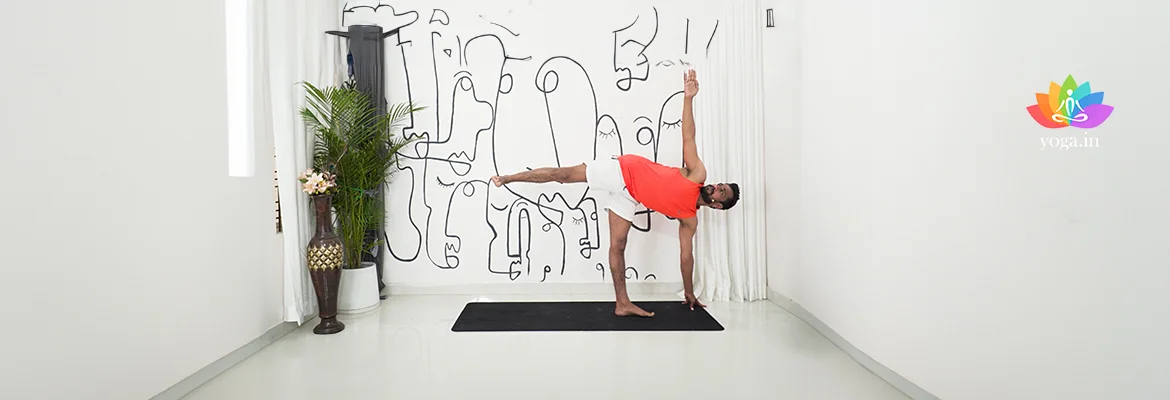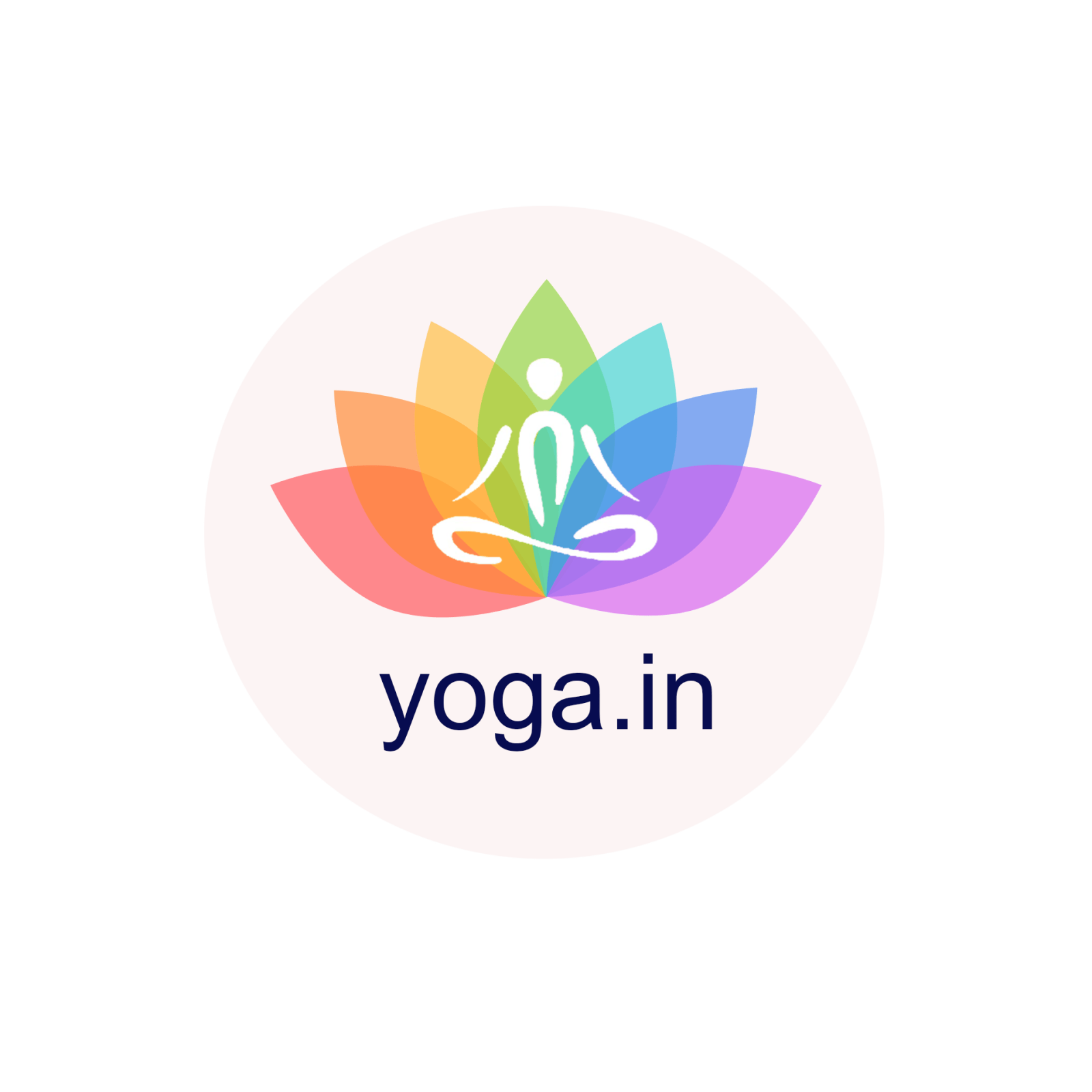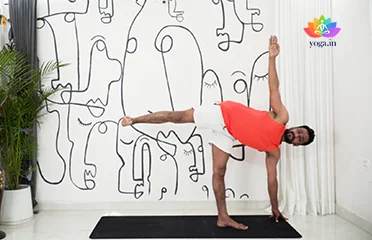Stand in Tadasana.
Introduction to the Asana
The Sanskrit name is derived from Ardha (अर्ध) meaning half, Chandra (चन्द्र) meaning moon and asana (आसन) meaning posture or seat.
Step to get in the pose
-
-
Spread your legs 3 feet wider.
-
Raise your left arm in line with your shoulders with the palms facing the ceiling.
-
Keep your right hand in line with your shoulders with your palms towards the floor.
-
Stand erect. Take a step forward with your left leg. Bend the left knee and stretch the right leg backward fully.
-
Place your left hand on the hip.
-
Bend to the right and then down with your right arm, place your fingertips in front of your right toes (Trikonasana)
-
Then shift your weight into your right leg.
-
As you press your right foot down, begin to extend the standing leg, as the left leg floats up in line with the hips.
-
As you keep the right leg strong, engage the left leg by pressing through the ball of the foot.
-
Open the left arm up towards the ceiling as you revolve your chest.
-
Keep gazing to the floor, to the side or even to the ceiling.
-
Stay for 5 breaths or longer, with your core and legs engaged.
-
To come out of the pose turn to look at the floor, lower your raised leg and come back out through Virbhadrasana2 (Warrior 2).
-
Repeat on the other side.
Common mistakes and pitfalls
-
Avoid having your chest rotate toward the floor.
-
Pivoting the standing foot inward.
-
Letting the raised leg move behind the hip
-
Hyperextending the knee or locking it out.
-
Outward swinging hips while standing disrupting alignment and equilibrium of posture.
-
The top leg slipping behind the body.
Benefits
-
Corrects postural imbalances and promotes joint health.
-
Increases body flexibility.
-
Promotes cellular regeneration.
-
Stretches hamstrings and strengthens the core muscles, thighs, buttocks, ankles, and knees.
-
Tones the Sacroiliac area.
-
Opens up the hips, lungs, and chest for better circulation.
-
Enhances blood circulation to the brain.
-
Gives relief to tonsillitis, cough, and other throat-related problems.
-
Improves body balance.
-
Relieves pressure in the abdominal region.
-
Improves digestion.
-
Eases constipation.
-
Cures problems related to the uterus & urethra (Urine -Tube) in women.
-
Improves focus and balance.
-
Releases stress and anxiety.
-
Improves mental health and wellbeing.
Contraindication
-
Avoid in case of injury or surgery in the arms, shoulders, cervical, rib cage, spine, hamstrings, ankle, foot, or hip joint.
-
Avoid in case of serious hip or spinal problems.
-
Avoid if suffering from peptic or duodenal ulcers or hernia.
-
Avoid in case of heart problems or abnormal blood pressure.
-
Avoid during pregnancy unless guided by the yoga teacher.
-
Avoid if suffering from diarrhoea.




